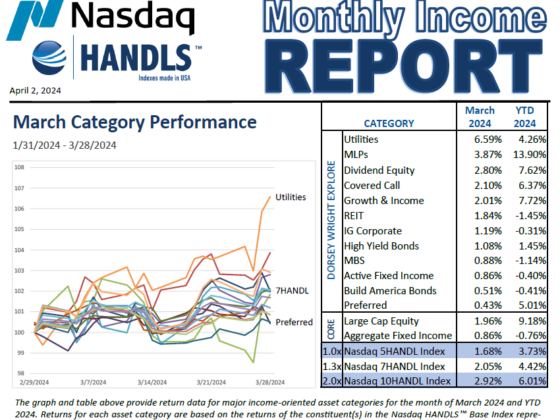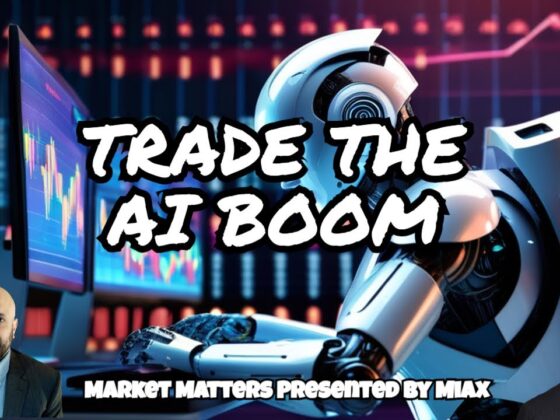It’s really bad out there in small business land as witnessed by the above chart. Unemployment has gone parabolic and there’s likely a bit more to go to potentially have 10%+ unemployment in the U.S. The rapid move from <3.5% unemployment to >10% unemployment will be the fastest in history. Indeed, we are in a new paradigm with the Covid-19 virus, the forced shutdown of the economy and the radical drop we are about to see in earnings, cash flow, buybacks, and new dividend cuts.
While that sounds really bad, and it is short-term, it’s the rate of change that matters for future returns. Often the best gains happen when you go from horrifically bad to just slightly less bad. That’s what we see in the Small Business Optimism Index currently. Over the next month or two we should see all the economic data and soft data look about as bad as it will ever get. That’s how real bottoms happen. Make no mistake, this recovery will take time and it will not be smooth, but once we have the sigh of relieve and get the virus contained, businesses will be allowed to open and in time, the unemployment rate will fall, and consumers will get back to life. Again, this will take time and many of the changes in our behavior will linger for a period of time. Some of the behavior may even change forever.
That said, let’s look at the stages of this bear market.
- The Fear & Panic Draw-down
When the market peaked and the news of the virus began to spread with businesses of all kinds losing revenue rapidly, stocks went straight down for a historic 35% one-month move. The stocks that were most affected went down the hardest and fastest, in many cases by 60% to 80%. With the exception of imminent bankruptcy, clearly that kind of move was over-done. Money rotated out of economically sensitive stocks and into defensives – staples, healthcare, and utilities. Sell offense, buy defense, raise cash was the strategy. For the current market, let’s call that the fear of the unknown phase of the drawdown.
- The Capitulation Rally
When a market goes straight down it’s like a rubber band stretching. You can stretch it only so much until the pressure builds so much that a large charge of energy is released in the opposite direction. That’s what we have seen since the March 23 low. Since March 23, the worst performing, most affected stocks have rallied the most. That’s a fairly normal response. We call that the dash for trash capitulation opportunity. I think we have moved to the fear of the known which in my opinion is an upgrade, particularly to everyone’s emotional situation. Quality stocks have performed well but the blast zone stocks have had remarkable rallies. The S&P 500 trough to today’s peak rallied 25%. The real opportunity in my opinion is investing in the worst hit stocks that are solid businesses guilty of being in the wrong place at the wrong time. Now that we have seen a wicked oversold rally, we need to see the nature of the next pullback. Will the market re-test the lows or make a higher low? Time will tell but the rest of the month offers a very important pass/fail test. Again, the businesses that survive this recession should offer some of the most attractive 3+ year returns. Symentry follows symmetry. The names I’m hoping to buy lower for long term holds include Marriot, Hilton, Live Nation, Booking.com, Disney, Carvana, Square, Wynn Resorts, and Boeing to name a few.
- The Ultimate Reality
In my opinion, we have just arrived at the reality portion of this government induced recession. It will take time for psychology and business to heal. We still have a largely closed economy and the follow-on effects from closing down a $21 trillion economy will create havoc and opportunity for those willing and able to connect the dots and think like active investors. Our new reality: the economy will be slower to open, will not likely return to the former glory in the near-term, will experience higher unemployment for longer than expected, could see further virus flare-ups, credit spasms, and elevated volatility for the rest of the year. There’s a lot to unpack there but suffice to say, from an investment perspective, the likely winners will not be those forced to remain fully invested or owning hundreds or thousands of stocks. In today’s world, there just aren’t that many companies doing well so owning a passive ETF is likely going to underwhelm for the time being. Active managers that have the ability and experience to trade the current volatility likely have an edge for the rest of the year. Sadly, for many investors, most fund managers have no ability or interest in being more adaptive to markets. They do what they do and tend not to adapt to the current environment. Trading the range while holding one’s core holdings is how we are navigating this market. There will come a time when buying and holding will make the most sense but until then, we trade the market we have not the one we want.
Bottom Line:
In summary, here are some takeaway points for investors:
- We believe Stage 1 of a bear market, the crash, has largely run its course.
- Stage 2 (capitulation rally) of the bear is in progress as we speak (close to a likely peak). Remember, viscous bear market rallies happen a lot when the VIX (volatility) Index is >30. We should continue to see high volatility and large moves in both directions given the uncertainty and heavy news-flow.
- Stage 3, the reality phase is likely coming very soon. Maybe we test the March 23 lows, maybe we breach those lows, or maybe we don’t see them again for many years. It’s impossible to know but it’s in this part of the process that the best long-term opportunities will be created.
- Our goal until further notice continues to be active trading around the core brands companies.
- The active trading component that includes gyrating between being fully invested and holding 20%+ cash should offer a much smoother ride for investors for the rest of the year versus a fully invested, buy, hold, and hope approach.
Disclosure:
This information was produced by and the opinions expressed are those of the author as of the date of writing and are subject to change. Any research is based on the author’s proprietary research and analysis of global markets and investing. The information and/or analysis presented have been compiled or arrived at from sources believed to be reliable, however the author does not make any representation as their accuracy or completeness and does not accept liability for any loss arising from the use hereof. Some internally generated information may be considered theoretical in nature and is subject to inherent limitations associated therein. There are no material changes to the conditions, objectives or investment strategies of the model portfolios for the period portrayed. Any sectors or allocations referenced may or may not be represented in portfolios managed by the author, and do not represent all of the securities purchased, sold or recommended for client accounts. The reader should not assume that any investments in sectors and markets identified or described were or will be profitable. Investing entails risks, including possible loss of principal. The use of tools cannot guarantee performance. The charts depicted within this presentation are for illustrative purposes only and are not indicative of future performance. Past performance is no guarantee of future results.







